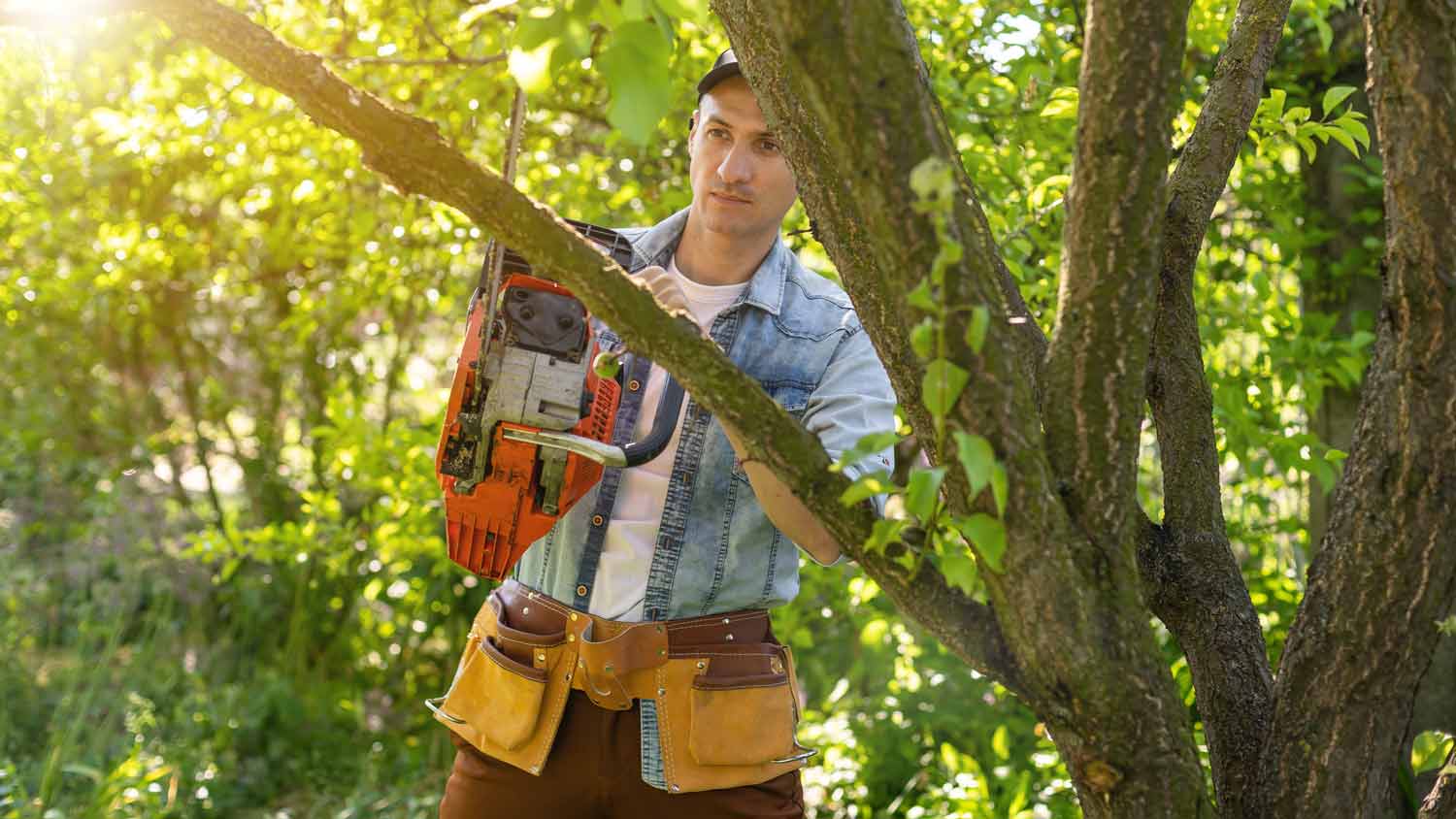
The cost of tree stump removal depends on size, removal method, location, and more. Our guide will show you how much stump removal costs.
Making summer cuts to your tree might be worth it if there’s a safety or disease hazard
You can trim trees in the summer as long as it’s not a significant trim or done to prevent a hazard.
Summer and fall are considered the worst time to trim trees.
After trimming trees, you shouldn’t paint over the cuts to seal them.
A professional tree trimmer can quickly and safely cut down branches that are larger than 4 inches in diameter.
Trees grow the most in late spring and early summer, and some species may see a growth spurt in the fall. So you may wonder, can I trim my trees in the summer?
It may be tempting to cut your tree back in the height of summer when new growth covers a path or hits a fence, but you risk harming the tree. However, there are some exceptions that make warm-weather trims acceptable. Let’s review if you should trim during the summer, when you should do it, and when to hire a professional tree trimmer for an expert touch.

You can trim trees in the summer, but it’s only recommended in a handful of situations. If you’re only removing a few small branches on a healthy tree, go ahead. Or if high winds or a major storm caused damage to your tree, trimming is a good idea to avoid a safety issue. Otherwise, summer and fall are considered the worst time to trim trees. Consider the following before you remove branches during the summer:
Is the tree unbalanced? Making sure the tree is balanced is a good safety measure, and it keeps your tree healthy. Trimming to help a struggling tree stand better is recommended.
Are the branches dead or diseased? Diseased branches may spread pathogens to nearby trees, so it’s best to remove them quickly. Dead branches can be a hazard, and shouldn’t harm the tree if you cut it off.
Are the branches near utility lines or another important structure? Tree branches near utility lines can cause disastrous issues, like power outages or even fires. If it seems imminent that the branches could fall on the lines, preventative trimming is a good idea.
Would removing a couple of branches help clear a path? Smaller branches that have grown outward can be annoying and may block a garden path. It’s best to trim these back if they pose a hazard.
Would a trim only be a cosmetic one? If you’re only looking to cut a few small branches to shape up the tree, this shouldn’t harm the tree and is fine to do on a limited basis.

If you’re set on making a few cuts before fall, there are few things to keep in mind while you trim.
Make a plan of what branches to cut: Planning ahead will help you understand which branches are necessary to take down, and should keep you from over cutting, making it a quick and easy job.
Make sure your cutting tools are sharp: Not only do dull tools make your work much harder, it can also make it dangerous because more pressure is needed to make the cut.
Only cut up to 20% of the tree: If you’re removing branches to open up the canopy of the tree, it’s best to remove a few limbs that are a few inches in diameter.
Depending on the scope of your tree cutting project, it may be best to hire a local tree trimming professional. These pros are trained in how to cut large or unruly branches greater than 4 inches in diameter, or broken branches that pose a hazard. A tree trimmer will have the gear and equipment necessary to safely remove parts of your tree that you couldn’t otherwise reach or carefully cut with normal tools.
These pros are also knowledgeable about tree species and can make recommendations about how much to cut and when, as some tree species are more sensitive than others. If your tree trimming job is a big one, it’s best to find a tree trimmer near you to get the job done.
From average costs to expert advice, get all the answers you need to get your job done.

The cost of tree stump removal depends on size, removal method, location, and more. Our guide will show you how much stump removal costs.

Trimming your bushes is one of the less costly aspects of landscaping, and it’s helpful to bundle many trimming services together to save money.

The cost to remove palm trees depends on several factors, including their size, location, and more. Our guide shows the average palm tree removal costs.

Learn what a maple tree looks like, whether you want to make your neighborhood walks more entertaining or find trees suitable for your yard.

Renting a stump grinder is one way to remove stumps in your yard. Find out the average stump grinder rental cost, additional expenses, and more.

Discover tips and tricks for how to plant a tree on a slope in your yard. Check out these four easy-to-follow steps to add shade and enjoyment.